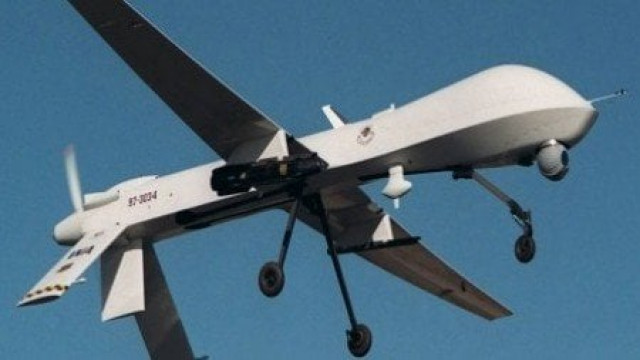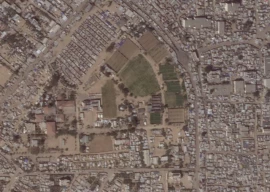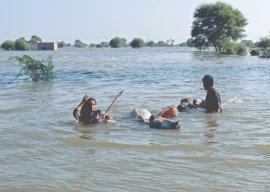
With more than 1,000 Unmanned Aerial Vehicles (UAVs) sold, Israel has raked in several hundred million dollars over the years.
Israel’s fleet ranges from aircraft which could fit in a soldier’s backpack, to planes the size of a Boeing 737 that can fly as far as Iran. The flying robots can be used to watch, hunt and kill.
Interest is such that a Turkish military delegation reportedly made a secret trip to Israel last month for training in remote piloting of the Heron drone, despite a major diplomatic crisis between the two countries.
“It’s good for reaching remote targets, wherever it’s needed,” an officer who would only identify himself as Captain Gil, said, pointing to an IAI Heron on the tarmac of the Palmahim Air Base, near Tel Aviv.
The plane, known in Israel as Shoval – “trail” in Hebrew – has a 16-metre (52-foot) wingspan, can fly at an altitude of 30,000 feet (almost 10 kilometres) and can stay in the air for 40 hours. It carries an array of sensors and radar systems, transmits information in real time, and is equipped with missiles.
“It can stay above a target a long time, without fear that a pilot might get shot,” said Gil as the bright sunlight reflected on the aircraft’s silver fuselage.
The sound of a drone circling over the base could be heard – a monotonous hum that is all too well known to the residents of the Gaza Strip, where at times it is followed by a deadly air strike.
UAVs played a key role in the devastating 22-day offensive against the Palestinian enclave which Israel launched on December 27, 2008 in a bid to end daily rocket fire against the Jewish state.
Drones, US-made in this case, are also widely used in Iraq, Afghanistan and Pakistan, to both monitor as well as strike.
Turkey says it is using Israeli drones, in coordination with the Americans, for surveillance in northern Iraq, the rear base for attacks on Turkish targets by the separatist Kurdistan Workers’ Party (PKK).
Israel prides itself on the cutting-edge technology of its UAVs, but human rights groups said scores of Palestinian civilians were killed by drones during the Gaza offensive. Israel insists it does all it can to avoid civilian casualties, while Gil stressed that drones are crucial for troop protection.
Gil, who sports aviator-type sunglasses, is a pilot, but one who sits outside the plane - behind a computer in an office set up in a container. Take-off and landing is generally done manually, with the computer taking over, unless manually overridden, for the rest of the flight.
Israel recently unveiled the Heron TP, also known as Eitan - Hebrew for “strong” - a 4.5 ton flying behemoth about the size of a 737 whose autonomy puts it well within range of Iran - the Jewish state’s arch-enemy. At the other end of the scale is a hand-sized and launched flying machine.
“Israel is the world’s leading exporter of drones, with more than 1,000 sold in 42 countries,” says Jacques Chemla, head engineer at the UAV department of the state-owned Israel Aircraft Industries, “the flagship of the country’s defence industry,” he says, “brings in about 350 million dollars a year”.
Published in The Express Tribune, July 2nd, 2010.




















COMMENTS
Comments are moderated and generally will be posted if they are on-topic and not abusive.
For more information, please see our Comments FAQ